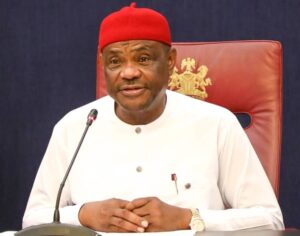By Blossom Chukwu
It is a painful fact and general knowledge in Nigeria, that regarding disaster risk reduction, Nigeria has lagged behind in implementing measures that reduce the incidence of Flood impacts. Enough blame has been placed on the release of water from the Cameroon dam, that has resulted in some of the deadly Flooding, recently experienced in Nigeria.
The devastating impact of Floods in Nigeria, has increased food and agricultural challenges. With over 266,000 acres of land-bearing farm products worth billions of naira submerged in flood almost on a yearly basis, there is the certainty of food shortages in Nigeria. In the face of the ongoing crisis, sustainable solutions are necessary to minimise the socio-economic and food security impact.
Flooding has also exposed the structural and systemic shortfalls of the Nigerian Government. The different Government efforts to control the scale of Flood damage through relief and evacuation, have proved ineffective at best, but the real failure is in the Nigerian governance system. Sadly, the Nigerian Government had regularly received the Flood forecast early enough, to formulate a foolproof disaster plan, but the reality of the devastation says otherwise.
A viable solution to this would be to evacuate ‘at-risk’ residents. The formation of trained community response teams to evacuate residents living along floodplains, would have also controlled the scale of Flood damage to human lives. Other measures include the adequate provision of shelter, relief materials and other forms of support to the victims of Flooding, which should be integral to the response programme.
The Director-General of the National Emergency Management Agency (NEMA), Mustapha Ahmed, has recently issued a warning of upcoming severe Flooding in the year 2023. He made the statement at a two-day Experts’ Technical Meeting on 2023 Climate-Related Disaster Preparedness and Mitigation Strategies in Abuja.
He said that it had earlier been revealed in the Seasonal Climate Predictions and Annual Flood Outlook by the Nigerian Meteorological Agency and the Nigeria Hydrological Services Agency. Ahmed further advised that those living around water channels and floodplains should take precautions.
According to the Director-General of Nigeria Hydrological Services Agency, Clement Nze, he disclosed that 178 LGAs in 32 states and the FCT had been predicted to experience severe flooding in 2023. The figure represents an expected, almost nationwide flooding experience.
From a more recent forecast, the National Emergency Management Agency (NEMA), says 14 States and 31 communities may witness heavy rainfall that may lead to flooding from July 4, across the country. This is contained in a statement signed by Mr Ibrahim Farinloye, Territorial Coordinator, NEMA, Lagos Territorial Office. Farinloye urged relevant stakeholders within the States concerned, to take precautionary measures to forestall loss of lives and properties.
He listed the States and communities as Plateau: Langtang and Shendam; Kano State: Sumaila, Tudun wada; Sokoto State: Shagari, Goronyo and Silame; Delta: Okwe. Others include Kaduna State: Kachia; Akwa Ibom: Upenekang; Adamawa: Mubi, Demsa, Song, Mayo-Belwa, Jimeta, and Yola; Katsina State: Katsina, Jibia, Kaita and Bindawa. He also added Kebbi State: Wara, Yelwa and Gwandu; Zamfara: Shinkafi and Gummi. Borno: Briyel; Jigawa: Gwaram; Kwara: Jebba; Niger: Mashegu and Kontagora are also included.
Farinloye thanked the Flood Early Warning System (FEWS), a Central Hub of the Federal Ministry of Environment Abuja, for sharing the information. As one of the slow paced form of response, the Federal Ministry of Environment said in February 22, that the second phase of dredging of Asa River in Kwara State, will begin in few weeks, in order to intensify efforts to prevent flooding in Kwara. Though the project has begun, with its first phase which began in 2020, it is yet to be completed, despite the constant Flood warnings.
According to official figures released by the Director-General of the National Emergency Management Agency, (NEMA), 2022 Floods resulted in 665 deaths with 3,181 persons injured nationwide. A total of 4,476,867 persons were affected, 2,437,411 persons were displaced and about 944,989 farmlands were damaged while 355,986 houses were partially or totally destroyed.
Providing insights into what to expect in this year’s rainy season, the Director General said: “The reality is that this year may witness Floods similar to what occurred last year if not more.” At the presentation of the 2023 climate-related disaster preparedness and mitigating strategies in Abuja, the NEMA boss also alerted that about 626 Local Government Areas across the country, will experience flooding this year.
He added that “This year’s forecast indicates a high risk of coastal flooding due to expected rise in sea levels and tidal surge, that may negatively impact agriculture, human settlements and transportation in Bayelsa, Delta, Lagos and Rivers states. Flash and urban floods were also part of the forecast over many cities and towns, due to poor drainage systems and the lack of compliance to town planning and environmental regulations.
Mustapha Ahmed confirmed that the Agency had already written letters to all the 36 State Governments and the FCT administration, with specific mention of the Local Government Areas at risk and actions that are expected to be taken by responsible authorities. He urged them to start sensitisation and mitigating efforts to prevent the impending disaster.
While some States seem to already be taking some measures, which may appear inadequate to mitigate against the looming crisis, other States have simply ignored the warning. They seem to be waiting for disaster to happen, before requesting for relief materials from Nigerians for their residents that will be affected.
Using Gombe State as an example, it was in the news on July 5, that the Gombe State Governor, Inuwa Yahaya had directed relevant Ministries and Agencies in the State, to activate emergency response towards mitigating the impacts of Flooding and other impending environmental challenges.
This is contained in a statement by Mr Ismaila Uba-Misilli, Director-General, Press Affairs, Government House, in Gombe on Tuesday July 4. He said, Yahaya gave the directive in response to the 2023 reports of the Nigerian Meteorological Agency (NiMet) and the Nigeria Hydrological Services Agency (NHSA).
NiMet had warned that some northern states, including parts of Gombe State, may experience heavy rainfall together with thunderstorms and high winds in the coming months. Uba-Misilli said it was in view of the warning that Governor Yahaya immediately gave the directive to the Ministry of Environment and Forest Resources, to activate State Emergency Response and management resources. He said that the measures would ensure safety of lives and properties, while mitigating the effects of the impending weather events and their life-threatening consequences.
“Acting on the directive, the Ministry had constituted a Task Force to engage all relevant stakeholders to come up with ways of mitigating the impact of the incidents in case they occur. These stakeholders include the State Emergency Management Agency (SEMA), Gombe State Environmental Sanitation and Protection Agency (GOSEPA), Ministries of Works, Health and Education, as well as non-governmental organisations”.
The Ministry has also engaged in aggressive advocacy and community sensitisation campaign on the new weather alert in all the envisaged flood-prone areas within the State. Uba-Misilli said the State Government has embarked on de-silting of drainages and water channels, to prevent flash Floods and allow for proper drainage of runoffs, especially in densely populated areas.
Despite the fact that Governor Inuwa Yahaya has taken the right steps in constituting measures to help prevent and manage the Flood situation when they occur, full action should go with these Groups that he has formed, to ensure effective risk management across the State. This is why all the States in the Federation, at their different levels, should channel more resources into Disaster Risk Preparedness and Management.
Disaster Risk Management must be urgently implemented if Nigeria must emerge from the various crisis associated with Flooding. Additionally, investments in capacity-building and disaster risk prevention, is essential to preventing Floods and improving agricultural resilience.
For better preventive measures, the rapid urbanisation and construction of settlements along floodplains, should be discouraged. In addition to this, capacity-building programmes, designed as a response to Flooding, should also work on the internal capacity of Flood-prone communities, through proper knowledge acquisition. This will enhances their capabilities to plan, respond, and recover from future flood events if they occur.










More Stories
Wike to critics: ‘I will live to sign condolence letters of those who said I collapsed’
INEC explains reason for abandoning recall of Senator Natasha
Uromi Killings: DSP Barau donates N16m to families of victims, reassures of justice